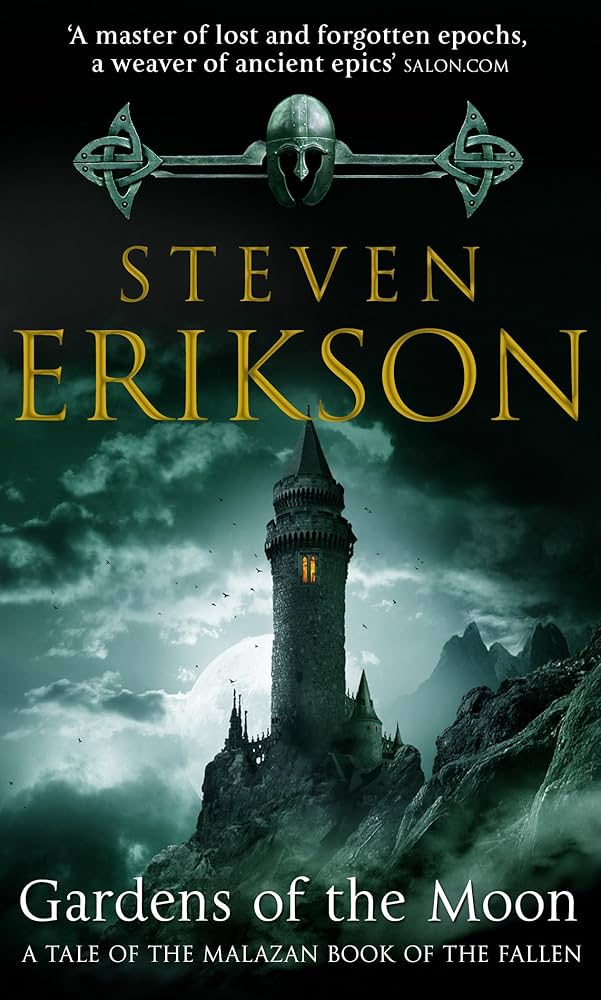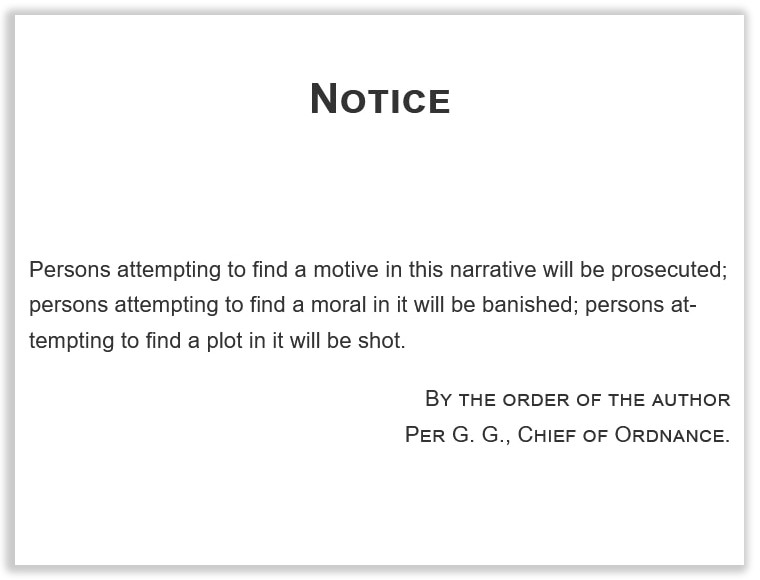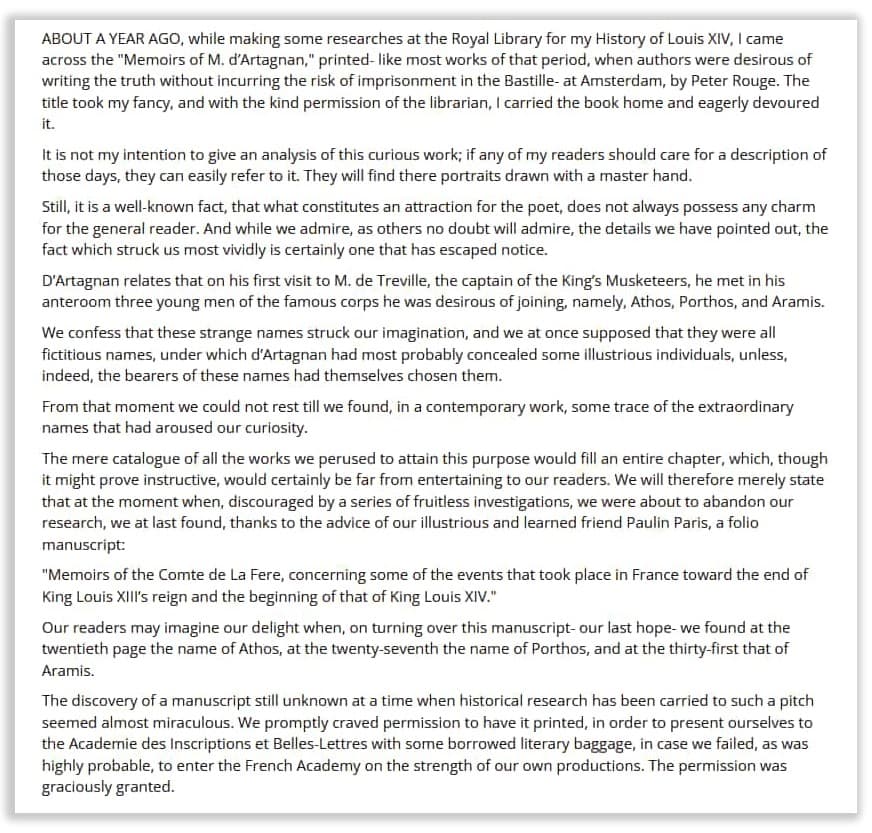What Is a Preface in a Book? (with Examples and Templates)
Before diving into the first chapter of a book, you might find a few pages written by the author that speak to you as a reader. These pages, known as the front matter, often share the story or journey behind the creation of the book. Usually, an author will write a preface as part of that front matter to convey additional insights into their creative process.
But what is a preface, and how does it differ from other sections of the front matter? Does your book need one? And if so, how do you write it? Crafting a preface might seem like a difficult practice, but it’s much simpler than you might think.
That’s why in this article, we will answer all your questions, including what is a preface in a book and whether or not you should write one. We’ve also added a few examples and templates you can use as inspiration.

What Is a Preface in a Book?
The preface of a book is part of its front matter, which is the section that comes before the first chapter and addresses readers directly. In this preface, you can describe your thought process as you wrote the book, how you researched the topic, or the goals you wanted to achieve through the book.
Preface, Introduction, Foreword, and Prologue: What’s the Difference?
Because they are added to a book in the same place, you might be wondering what makes a preface different from the rest of the front-matter pages. To add to the confusion, you don’t always see all of them in the same book, especially in fiction. In reality, they’re all quite different from one another and are used for different purposes.
Here is a comparison between each of the types of front matter:
- Preface: The preface is written by the author and describes the main goals of the book or how it was created.
- Foreword: A foreword is written by another party, usually a subject-matter expert, and gives credibility to the author as well as the contents of the book.
- Prologue: Found only in some fiction books, the prologue offers a backstory to the main events of a novel or reveals a scene that happened before these events.
- Introduction: Used mostly in non-fiction books, an introduction talks briefly about the main topics of the book with the goal of getting readers curious and shaping their expectations.
Why Should You Write a Preface for Your Book?
While a preface can be a good addition to your book, you need to think carefully about whether or not you truly need one. In most cases, a prologue (for fiction books) and a foreword or an introduction (for non-fiction books) can be enough. However, it depends on your content and how well-known your work is among readers.
When to Write a Preface
There are many reasons for writing a preface for your book. Some authors want to enrich their book with more insights into their research. For others, they want to share moments from their writing process that readers might benefit from reading. A preface can work out well for you when:
- You are creating a new edition of a published book: If you’re updating your book for a specific reason, you can write about it in the preface. You can share how you revised certain parts, or talk about valuable moments or memories of your writing, editing, or publishing process.
- You have a good reputation as an author: The more well-known you are as an author, the more likely readers will want to learn more about how or why you wrote the book.
- You used certain research methods in writing the book: If you’re publishing in the academic or scientific fields, your research methods, assumptions, and variables can be explained in the preface rather than the introduction.
When Not to Write a Preface
While the aforementioned reasons might convince you to write a preface, you must know that not every book needs one. You might want to avoid writing a preface if:
- The book is a work of fiction (with exceptions): Most fiction books don’t need a preface. Some don’t even have prologues as no plot points happen before the first chapter. However, some authors do write prefaces for their novels if they’ve published new editions of them.
- The introduction is enough (in non-fiction books): Many authors are content with just writing an introduction in the front matter of non-fiction books. Most of the time, you only need to introduce the contents of the book to your readers without going into detail about how you wrote it.
- You are publishing a book for the first time: Finally, if you’re a first-time author, you are likely still building an audience. As a result, readers might not be interested in reading a preface and would rather start with the first chapter instead.

How to Write a Book Preface
So far, we’ve covered the definition of a preface and whether or not you should write one. But what sort of content actually goes into a preface? While there aren’t any hard rules, there are a few guidelines and tips you can take advantage of to write an impactful preface.
Below are a few of these guidelines:
- Tone of voice: In many cases, this is your chance to talk to readers directly and convey your goals to them clearly and impactfully.
- Length: The best length for a preface is 1–2 pages; this way it is long enough for you to get your point across, but short enough to keep readers engaged without boring them.
- Information: In the case of non-fiction books, never include key information that isn’t present in any other part of your book. Otherwise, your readers will miss out on key information if they do not read your preface.
What to Include in a Preface
Authors who write prefaces for their books tend to mention a few common topics, even if they write in different genres. You don’t have to include all of them in your own preface, but it’s a good idea to be aware of the possibilities before you start writing.
In this section, we’ve compiled a list of the most common topics you can write about in your preface:
- The book’s origin story: How did you first come up with the idea of the book? Why did you decide to write it?
- The book’s purpose: What is the main goal you want to achieve through your book?
- Why you are qualified to write it: Do you have any hands-on experience in any of the fields or matters explained in the book?
- Your writing process: How did you write the book? Did you follow a certain routine? Is there a special memory of writing it that you want to share with your readers?
- The importance of the book’s topics: Why is the subject of your book relevant to the readers? What does it contribute to your field?
- Your passion: What do you love most about the book, its ideas, and the writing process? What drives you to care about this subject?
- Signature: While this is largely optional, you can sign off your preface with the date and location at which you wrote it.

Book Preface Templates and Planner
Now that you know the basic guidelines of how to write a preface, you can try writing one yourself. There are no set templates out there for authors to follow, but there are plenty of great examples to look at and a number of topics you might consider essential to your book’s preface.
To help you with writing your preface, we’ve created two templates, one for fiction books and one for non-fiction.
Non-Fiction Preface Template
Introduce yourself and state your credentials to add credibility to your book. Talk to the reader directly using a conversational but informative tone. If you’ll be covering personal experiences in the book, your tone can be more informal and emotional.
Talk about the basic ideas or the topics in the book. Don’t add too much detail, especially if you’re also writing an introduction. If you’ve done fieldwork, collected data from surveys, or performed a meta-analysis of several studies, you can mention it here.
Try to sell your idea to the reader; what will they gain from reading your book? Here, you can list the reasons why this book is important to read or study.
If you want, you can also talk about what inspired you to write this book, how the ideas came to you, and how you translated them into words on the page. Was there a specific moment you remember most out of your time writing the book? Describe it; explain your emotions and thoughts, but make it relevant to the book.
Optionally, you can end the preface by wishing the reader well and signing off with your name and the date you finished writing the preface.
Fiction Preface Template
Start by greeting your readers; your tone here can fall in between conversational and emotional. Introduce yourself and the information you want to explain in the preface.
After that, start walking readers through your thought process while writing the book. You can mention what inspired you to incorporate, for example, more complex worldbuilding or magic systems. If there are several plot beats you want to discuss, go through them in a systematic order.
If you want, you can talk about how you did your research for the story. Then, you can tie everything back to the book by linking the supplemental information with the fictional world of your story.
Finally, write your name and the date of writing; you can add your location as well if it’s relevant.
Book Preface Examples
In practice, most authors who write prefaces tend to be more creative with them. To see it in action, you can read through the following examples of authors using the prefaces of their books to convey ideas to their readers:
1. The Picture of Dorian Gray by Oscar Wilde

Oscar Wilde’s preface in The Picture of Dorian Gray talks about the idea of creating art and appreciating it. Though Wilde doesn’t give a clear opinion himself, he urges readers to think about the way they perceive artwork and the value they associate with it. Thus, he introduces irony to the idea of appreciating art, which becomes the central theme of the novel itself.
2. Gardens of the Moon by Steven Erikson

In the preface to Gardens of the Moon, Steven Erikson reflects on the journey to publishing his work and the ambitious nature of his writing. He shares with readers the initial challenges of publishing this book, emphasizing the complexity that made it unique in its genre at the time. Erikson’s preface acts as a disclaimer for readers before diving into the intricate and rich world of Malazan. Moreover, it concludes with a few words of encouragement for ambitious authors.
3. Thinking, Fast and Slow by Daniel Kahneman

In this preface, Daniel Kahneman introduces the main topic of the book: the two systems of thought that we use to make decisions. He then explains his motivation for writing the book, which stems from his extensive research in psychology and behavioral economics. To put it simply, the preface introduces these concepts to readers and highlights their importance.
4. The Adventures of Huckleberry Finn by Mark Twain

Mark Twain’s preface to The Adventures of Huckleberry Finn jokingly warns readers not to search for a motive, moral, or plot within the story, or else they’d get extreme punishments. With a singular paragraph, this disclaimer gives the reader an idea about how the novel blends humor and serious themes. Moreover, it displays Twain’s use of satire in storytelling. As a result, this preface prepares readers to experience the unconventional story on the following pages.
5. The Three Musketeers by Alexandre Dumas

The preface of The Three Musketeers by Alexandre Dumas introduces readers to the story behind the novel. He discusses his discovery of M. d’Artagnan’s memoirs and how they inspired him to write this book. Using his research, Dumas manages to blend history and fiction together into an action-packed yet somewhat realistic adventure. By telling readers about this process in the preface, Dumas sets a tone of excitement and adventure for the rest of the book.
Final Thoughts
Not every book needs a preface. What makes it relevant to your book is what it adds to the reading experience. Does your preface shed light on interesting parts of your writing process? Does it justify the data you have presented in your research? Whether or not you have something extra to share with readers through the preface is up to you.
Have you written a preface for any of your books? If so, feel free to tell us about it!
.
Read More
How to Write the Best Book Introduction (With Checklists & Examples)
On Writing a Book Title: Practical Tips for Authors
How to Write a Compelling Story Outline: A Step-by-Step Guide

















Ram Nivas Kumar
September 8, 2023Nice suggestions! Every author should take a note of this after completing his work. Thanks.
Kotobee
September 10, 2023Thank you Ram! We’re delighted you found our suggestions helpful. 😊
Marsha Joiner
February 5, 2025Thank you for the information on the beginning chapters of a book. I find them very helpful in my understanding what should go where and how much information I should provide before the actual book.
Kotobee
April 7, 2025Glad you found this article helpful, Marsha! And best of luck with writing your book.